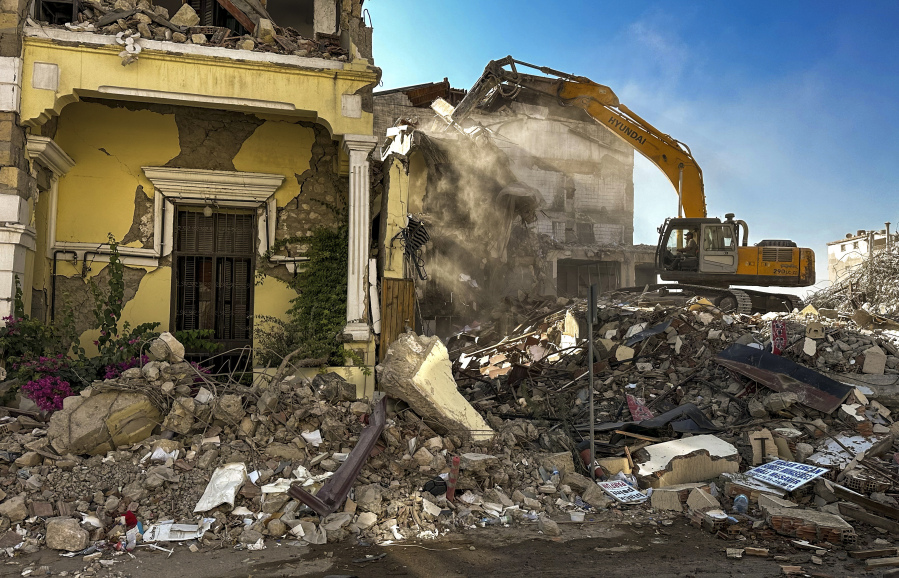ISTANBUL, Turkey — Dust and rubble fill the street as an excavator tears off chunks of concrete from an old apartment building. Bystanders watch from afar as construction equipment tears down the structure.
Among them is Ibrahim Ozaydin, 30, a former resident. He watches the demolition not with worry, but with relief, as his building was marked by officials as unsafe months ago.
“We decided to build our own house,” he told The Associated Press as he watched his former home being torn down.
The sight of construction vehicles demolishing buildings became engrained in Turkish minds six months ago, after a 7.8-magnitude earthquake hit Kahramanmaras and 10 other provinces in southern Turkey on the morning of Feb. 6.
Over 50,000 people died, and hundreds of thousands were left homeless. Some 300,000 buildings were damaged. Survivors needed to be rescued, rubble had to be cleared and buildings on the verge of collapse needed to be torn down.
Yet this latest demolition is taking place in Istanbul, Turkey’s largest metropolis, far away from the earthquake zone. This time, the building wasn’t torn down as part of search-and-rescue efforts, but to prevent such harrowing scenes in the future.
The building was occupied only by Ozaydin and his extended family, who also owned a shop on the ground floor. The family managed to relocate their shop and build a sturdier house at a different location, but theirs is an exceptional story in a city where hundreds of thousands of buildings are at risk.
Istanbul lies atop a major fault line, one that experts warn could break at any moment. Both the national government and local administrations are racing against time to prepare their cities for future disasters.
However, even preparedness can fall victim to political rivalry: Authorities in opposition-held Istanbul and the national government in Ankara cannot agree on the exact number of buildings at risk of crumbling in the event of an earthquake. But both put the figure at hundreds of thousands.
After the February tragedy, the Istanbul municipality headed by Mayor Ekrem Imamoglu, a prominent figure in the opposition to President Recep Tayyip Erdogan, earmarked for demolition 318 buildings housing over 10,000 people.
During a heated election campaign right before his reelection to a third decade in power, Erdogan pledged to construct 319,000 new homes within the year. He attended many groundbreaking ceremonies.
“It’s easy to say, ‘We are building this many square meters atop a hill’ or ‘5,000 residences are being built somewhere,” said Bugra Gokce, an official with the Istanbul municipality overseeing the demolition, in an apparent jab at the national government’s urban transformation programs. “We are also doing that. But if you’re not also reducing the risk to existing buildings in the city, it is nothing more than urban expansion.”



